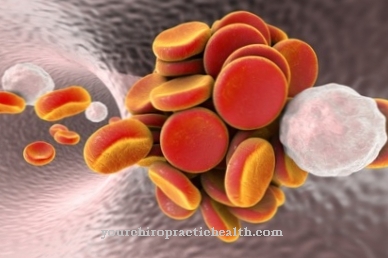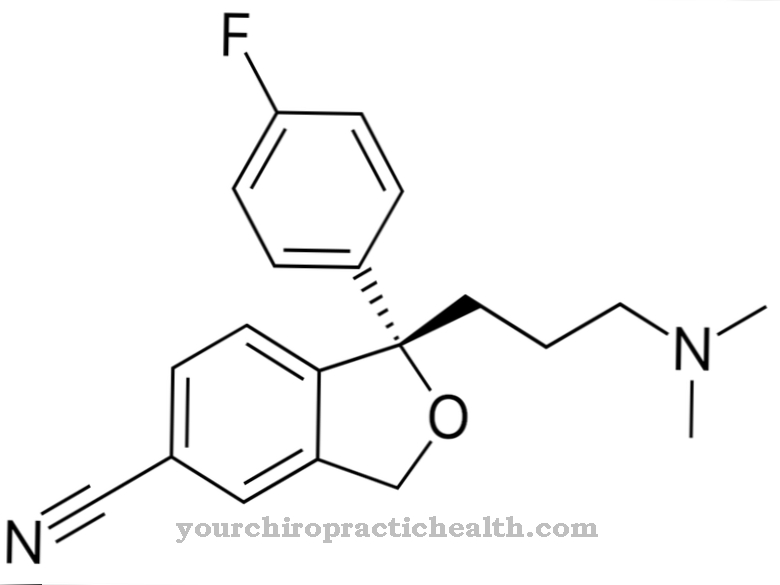Naltrexone is a drug from the group of opioid antagonists. The prescription drug is used in opioid weaning.
What is naltrexone?

Naltrexone is an opioid antagonist. Opioid antagonists are drugs that bind to opioid receptors and can partially or completely cancel the effect of the opioids. But the active ingredient is not only used in patients with an opioid addiction. It is also an integral part of comprehensive therapy programs for alcohol addiction. Naltrexone is said to reduce the risk of relapse and to support patients in the phase of abstinence.
In Germany, naltrexone requires a prescription. Even with long-term treatment, there is no habituation effect. Neither physical nor mental dependence symptoms are observed.
Pharmacological effect
The exact mechanism of action of naltrexone is still unclear. The drug belongs to the opioid antagonists. These act as receptor antagonists on the opioid receptors. They bind to these receptors and suddenly displace the opiates from the receptors. Thus, naltrexone serves as an antidote for opioid poisoning.
But the treatment of withdrawal symptoms is based on a different mechanism of action. It is believed that the active ingredient develops an interaction with the body's own opioid system. In this system, the body releases endorphins when there are far-reaching emotional events, stress or pain. These have both pain relieving and mood-enhancing effects.
Presumably, this reward system is permanently and fundamentally stimulated by alcohol abuse. The result is a brightening of the mood. Every further alcohol consumption accelerates this situation, so that ultimately a dependency arises. After withdrawal, even a small amount of alcohol is enough to cause a relapse. The opioid antagonist lowers the risk of relapse by influencing the body's own opioid system. It reduces the desire for alcohol in abstinent and non-abstinent patients.
Medical application & use
After an opioid detox, naltrexone can be used in the treatment of opioid addicts. It is administered in addition to psychotherapeutic and psychological treatment. But the active ingredient is not only used for this purpose. In Germany, the USA and in other European countries, naltrexone is also approved for the prevention of relapse in alcoholism. The medicinal substance serves to reduce the risk of relapse and to lessen the desire for alcohol. This is intended to support the abstinence of former alcohol addicts.
Treatment with naltrexone for borderline personality disorders and dissociative disorders is also showing success. However, the active ingredient is not approved for this indication, so it is an off-label use. Naltrexone is also occasionally used in off-label use for autism and mental development disorders.
Recent studies also show that low-dose naltrexone is effective in treating multiple sclerosis. The participants in the study reported a significant reduction in spasticity after six months. The active ingredient seems to have a positive influence on the course of the disease. Presumably this is due to an anti-inflammatory effect. Only one of 40 participants showed a progressive decrease in the nerve sheaths. Fibromyalgia, amyotrophic lateral sclerosis (ALS), cancer, and opiate-induced constipation are other conditions that can be treated with naltrexone.
You can find your medication here
➔ Medicines for painRisks & side effects
If opioid-dependent people are not opiate-free for at least a week before starting naltrexone therapy, naltrexone can cause an acute withdrawal syndrome. In order to prevent this life-threatening situation and to confirm freedom from opiates, a urine sample is therefore usually analyzed before treatment begins.
Common side effects associated with naltrexone include difficulty sleeping, anxiety, and increased excitability. Nausea, abdominal pain, joint pain, muscle pain and headache can also occur.
If naltrexone is used at the same time as opiates, an overdose can occur. This is associated with potentially fatal breathing disorders. For this reason, patients must not take any opiates or other drugs containing opioids such as codeine or loperamide during therapy with naltrexone. It should be noted that the opioid analgesics may not be fully effective during treatment with naltrexone. The dose of these opioid analgesics would have to be increased to relieve pain. However, this can lead to serious complications.
In high doses, naltrexone is toxic to the liver. Because of this hepatotoxic effect, the administration of naltrexone is contraindicated in severe liver diseases such as liver cirrhosis. However, even in patients without prior liver damage, an increase in liver transaminases and damage to the liver can occur. Since there are only few study data available for alcoholic people under the age of 20, they are usually not treated with naltrexone.
























.jpg)



